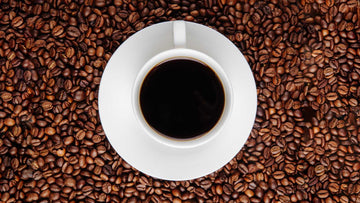Espresso is beloved for its intense flavor and rich aroma—but how much of that distinctive taste comes from caffeine itself? While caffeine is often associated with bitterness, its role in espresso’s flavor is more complex than you might think. In this blog, we’ll explore how caffeine influences espresso’s taste, why it’s not the sole source of bitterness, and how your coffee machine can optimize extraction for a perfectly balanced shot.
1. Caffeine’s Chemical Impact on Flavor
Bitterness ≠ Just Caffeine: While caffeine is a bitter compound, it only contributes about 10-15% of espresso’s total bitterness. Other compounds (like chlorogenic acids and melanoidins) play a bigger role.
Sweetness & Acidity Balance: Caffeine interacts with other flavor molecules, enhancing perceived brightness (acidity) while muting some sweetness.
Crema Connection: Caffeine helps stabilize espresso’s signature crema, which carries aromatic compounds that influence taste.
2. How Espresso Extraction Affects Caffeine and Bitterness
The way espresso is brewed directly affects caffeine content and bitterness. Since espresso is made by forcing hot water through finely ground coffee under high pressure, it extracts caffeine quickly. Studies show that espresso generally contains less caffeine per serving than a standard cup of brewed coffee due to its smaller serving size, but its caffeine concentration per milliliter is much higher.
Over-extraction can also amplify bitterness. When coffee is extracted for too long or with too fine a grind, more bitter compounds, including caffeine, are drawn out, overpowering the natural sweetness and acidity of the beans. This is why baristas carefully calibrate grind size, water temperature, and extraction time to achieve a balanced espresso shot with controlled bitterness.
3. How Caffeine Changes Depending on Espresso Variables
Not all espresso shots taste the same—caffeine’s impact varies depending on:
A. Coffee Bean Selection
Robusta Beans: These beans contain nearly twice as much caffeine as Arabica (2.7% vs. 1.5%), which results in a harsher, more bitter profile.
Roast Level: Lighter roasts tend to retain more caffeine than darker roasts, but dark roasts often have a more pronounced bitterness due to the breakdown of compounds during roasting.
B. Extraction Time & Pressure
Under-extracted espresso (fast shot, <20 sec): Weak, sour, with less caffeine extraction.
Over-extracted espresso (slow shot, >35 sec): Bitter, astringent, with excessive caffeine and harsh compounds.
Ideal extraction (25-30 sec, 9 bars of pressure): Balanced caffeine release, optimal flavor.
C. Grind Size & Dose
Finer grind: More surface area leads to more caffeine extraction, but can risk over-extraction.
Higher dose (e.g., 18-20g vs. 14-16g): More total caffeine per shot.
Balancing Bitterness in High-Caffeine Espresso
Use 100% Arabica beans – Smoother, less bitter than Robusta blends.
Opt for medium roasts – Balance between caffeine and roast-derived sweetness.
Adjust extraction time – Keep shots between 25-30 seconds for ideal caffeine balance.
Try a ristretto (short shot) – Less caffeine (only ~50-60 mg) but sweeter, more concentrated flavor.
Experiment with lower-pressure brewing – Some machines allow pressure profiling to reduce harshness.
Adding Milk or Sugar – While purists may prefer black espresso, adding milk helps mellow bitterness by introducing fats that bind with bitter compounds. Similarly, sugar or alternative sweeteners can mask bitterness without altering caffeine content.
Conclusion:
Caffeine isn’t just about energy—it’s a key player in espresso’s signature taste. By understanding how it interacts with other compounds, you can fine-tune your brewing to get the perfect balance of strength, bitterness, and richness.
Next time you sip an espresso, pay attention to how caffeine shapes its flavor—and experiment with different beans, roasts, and extractions to craft your ideal shot!
Works Cited
Clarke, R. J., and R. Macrae. Coffee: Volume 1: Chemistry. Elsevier, 1988.
Hoffman, James. The World Atlas of Coffee: From Beans to Brewing. Octopus Publishing Group, 2019.
Illy, Andrea, and Renato Viani. Espresso Coffee: The Science of Quality. Academic Press, 2005.






